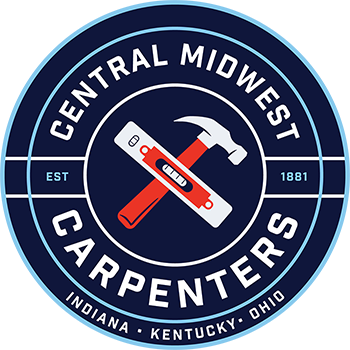Prosperity, Complacency and Trouble

Local unions took advantage of the favorable conditions to expand into new areas of collective bargaining. In 1950, for example, the New York District Council of Carpenters negotiated a 3% payroll tax to support a Carpenters Welfare Fund. The idea of health and welfare funds became so attractive that the national office’s Health and Welfare Committee, appointed in 1954, urged all locals to set up programs as quickly as possible. Jointly trusteed pension funds soon followed, as well as other contract gains, such as safety measures, travel time, and coffee breaks.
The accomplishments of this period brought additional stability into the lives of working carpenters and their families. Unfortunately, the extended boom and success in the bargaining arena also bred a measure of complacency within the unions. With nearly full employment becoming routine, business agents often reduced their roles to those of office administration, job referrals, and contract negotiations. Traditional tasks such as organizing the unorganized and membership education fell by the wayside. Furthermore, many union leaders and rank-and-file members, terrified by the nightmare of the Great Depression, were convinced that job security depended on limiting the number of union members in order to minimize competition for a finite number of jobs.
The post-war construction boom, however, outpaced the unions’ ability to satisfy all the labor requirements. As a result, a significant number of non-union contractors began to appear on the fringes of the industry, particularly in suburban and rural homebuilding. Many unionists remained unconcerned about the potential threat of these newcomers since work was plentiful in the growing commercial and industrial construction sectors. Compared to the physical demands and the short life span of house construction, employment was more stable and of longer duration on large-scale projects. Ignoring the emerging non-union workforce came at a cost, however. While union trades workers continued to build 80% of all construction in the U.S. As late as 1969, the reliance on bigger projects and a limited membership allowed the non-union employers to win a foothold in the industry.
The 1970s began a new and more difficult era. The face of labor relations in construction has been completely transformed in the last 20 years. While the Carpenters Union and other building trades unions have always had to contend with hostile governmental interference and economic insecurity, they still successfully established unionism as a widely accepted force in the industry by the turn of the century. Since 1970 however, the rapid rise of the open shop has upset the long-standing collective bargaining equilibrium in construction. Modern anti-union advocates have been able to accomplish much more than their predecessors did. Today, just 30-35% of the construction dollar in the U.S. involves union workers.
The roots of this transformation can be found in the spiraling costs of the late 1960s. Escalating materials and labor prices set off alarms in the ranks of building owners, management consultants, corporate journalists, and public policy makers. In 1969, 200 of the nation’s top executives formed the Business Roundtable in order to put a lid on construction bills. The Roundtable, made up of the heads of General Motors, General Electric, Exxon, U.S. Steel, Du Pont, among others, concluded that the route to financial control over capital construction costs lay in blunting the power of the building trades unions.
The Roundtable built political support to weaken legislation, such as the Davis-Bacon Act, that protects construction workers’ wages. It laid out a collective-bargaining agenda to eliminate union gains. Finally, many of its members sponsored and subsidized non-union contractors on their own projects. The Roundtable’s efforts combined with the severe building recession of the mid-1970s and an increasingly anti-labor political climate in the United States to provide a generous window of opportunity for the open-shop movement.
Non-union builders, gathered under the umbrella of the Associated Builders and Contractors (ABC), took advantage of these opportunities. Today, construction in the U.S. is no longer dominated by union contractors. Open-shop and/or double-breasted firms now participate in and even control many major construction markets. Their mission is clear. They reduce wages, weaken established safety and working conditions, and change the way work is carried out on the jobsite. They seek to replace the traditional egalitarian apprentice/journeyman system with the co-called “merit shop” philosophy in which workers are pitted against one another and have no real shot at quality training or a decent lifelong career in the trades.


Dejar un comentario
¿Quieres unirte a la conversación?Siéntete libre de contribuir!